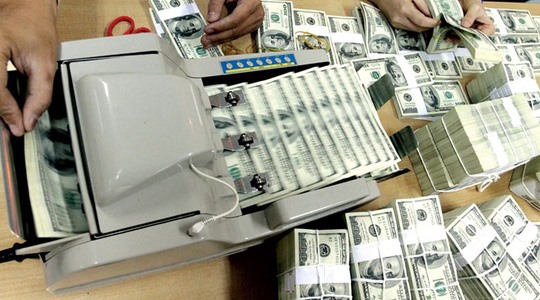 Economy
Economy

Adoption of appropriate policies by the State Bank of Việt Nam (SBV) has helped it buy a large amount of US dollars to increase the nation’s foreign reserves, industry insiders said.
 |
| Appropriate State Bank of Việt Nam (SBV) policies helped it buy a large amount of US dollars. — Photo nld.com.vn |
HÀ NỘI — Adoption of appropriate policies by the State Bank of Việt Nam (SBV) has helped it buy a large amount of US dollars to increase the nation’s foreign reserves, industry insiders said.
Last week, commercial banks sold a significant amount of dollars to the central bank after the latter used futures trading tools to buy foreign currencies and reduced its buying price for the greenback for three consecutive sessions. Vneconomy.vn reported that the central bank purchased as much as some US$1 billion just in one day at the beginning of last week.
With the futures trading tools, commercial banks can sell the foreign currency to the central bank in the future at the current price, without worrying about prices going down later.
The central bank’s purchase has also created more choice for commercial banks so that they can be more active in balancing foreign currency flow and capital demand.
The buying price for the greenback at the central bank’s head transactions office on October 10 was quoted at VNĐ22,720 per US dollar, down VNĐ5 from the fixed price set in end-June and VNĐ20 below the upper limit of VNĐ23,121.
This is the first time the central bank has made such a move since it initiated a new fixing mechanism for the USD/VNĐ rate in January 2016.
Since the start of this year, the bank has raised the buying price three times-- in January, April and June.
Below ceiling
Meanwhile, the bank continues to keep its selling price of the dollar VNĐ20 below the ceiling, indicating it is ready to intervene in the market and keep the USD/VNĐ steady until the end of this year.
According to experts, it is not a random move. The aforementioned decision on adjustment came after a nine-month trade surplus was fixed. Việt Nam not only offset the cumulative trade deficit since the beginning of the year but returned to remarkable surplus. Foreign investment in Việt Nam had high disbursement rate and foreign currency continued to increase.
In the world market, the US dollar strongly depreciated and prior to that was the Fed’s decision on not to increase interest rates. Meanwhile, with regard to the reference basket on the basis of which Việt Nam is calculating exchange rate, many currencies got stronger, specially the Chinese yuan.
In the banking system, foreign currency status accumulated and was relatively positive in the last three months, partly reflecting the reality that the đồng-US dollar interest rate swap has been in negative status for a long time. Therefore, the central bank decided to create a new operating rhythm, promoting the defreeze of those accumulated resources. — VNS




